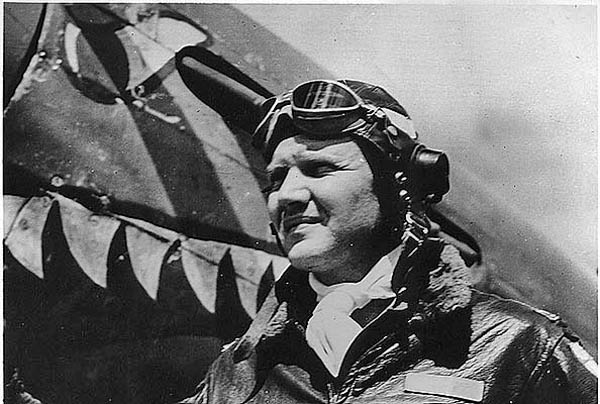
One of the last living legends of World War II aerial warfare, Brig. Gen. Clarence Emil “Bud” Anderson, has soared into history, passing away peacefully at his home in Auburn, California at the venerable age of 102.

On the afternoon of May 17, 2024, the skies dimmed as the “triple ace” fighter pilot, credited with a remarkable 16 German plane kills, concluded his long and storied journey surrounded by family.

Anderson’s illustrious military career began soon after the United States’ entry into the Second World War. With a pilot’s license already in hand at 19, he enlisted in January 1942 and was commissioned as a second lieutenant in the U.S. Army Air Forces.

Initially stationed stateside, it was not until late 1943 that he would be deployed to England, where his legend began to take flight.

Assigned to the 357th Fighter Group, Anderson began flying bomber escort missions,piloting the iconic P-51 Mustang—affectionately named “Old Crow” after his favored bourbon—Anderson quickly proved his mettle.

Within the first five months of 1944, he earned “ace” status by shooting down five German planes. By year’s end, he had achieved “triple ace” status, a testament to his aerial prowess in combat.

During the war, Anderson flew a total of 116 missions and, with 16 and a quarter confirmed kills—the quarter, a result of a joint effort—he became one of the top aces of the 357th Fighter Group, which as a unit claimed nearly 700 German planes.

General Yeager, General Anderson’s squadron mate, shot down 13 German planes. He was the first pilot to break the sound barrier in 1947. Later, he joined General Anderson in a test-flight program in California.

Beyond World War II, Anderson’s dedication to service continued. He flew combat missions during the Vietnam War in an F-105 Thunderchief, known as “Old Crow II,” targeting North Vietnamese supply lines.

His military accolades culminated in retirement at the rank of colonel in 1972, but his flight path extended into civilian life as he managed the McDonnell Aircraft Company’s test facility at Edwards Air Force Base for more than a decade.

By the time he reached his 100th birthday in 2022, Anderson was the last living triple ace from World War II.His commitment and bravery did not go unnoticed. In 2022, an honorary promotion to brigadier general was conferred upon Anderson.

Charles Q. Brown, then-Chief of Staff of the Air Force and current Chairman of the Joint Chiefs of Staff, presided over the ceremony, lauding Anderson’s indelible impact: “[Bud’s] kind of a wrecking ball of a guy and I think for many of us, probably wouldn’t want to have him behind us shooting us down—he had a distinguished career… It was really good to have a chance just to read through [some of Bud’s service records] and for me personally to reflect on the impact you had on our history of our Air Force.”

The celebration of Anderson’s promotion fittingly included shots of Old Crow, paying homage to his warbird’s namesake and his own spirited legacy.

His passing marks not only the loss of the last World War II triple ace but also the end of an era characterized by the gallantry and heroism of the Greatest Generation’s aviators.

Survived by his son Jim Anderson, daughter Kitty Burlington, four grandchildren, and five great-grandchildren, Bud Anderson remains an enduring inspiration, a figure who will be revered by future generations and remembered whenever the tales of World War II aces are told.
Relevant articles:
– Bud Anderson, the last World War II ‘triple ace,’ dies at 102, Task & Purpose

